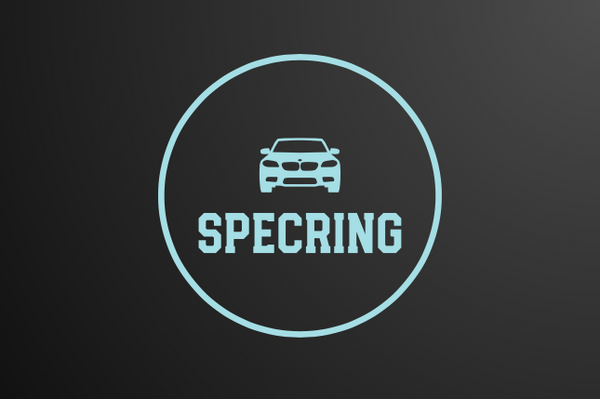Carbon fiber hoods have become a go-to upgrade for performance enthusiasts and BMW owners looking to shed weight and enhance aesthetics. However, as temperatures drop and winter conditions set in, some drivers wonder whether they should swap back to their OEM metal hood. In this article, we'll break down the advantages and potential concerns of using a carbon fiber hood in winter, backed by research and expert insights.
Carbon Fiber Hoods vs. OEM Hoods in Winter Conditions
1. Weight Reduction and Winter Performance
One of the biggest advantages of carbon fiber hoods is their significant weight reduction. This translates into better vehicle dynamics, improved steering response, and even minor traction benefits in snowy conditions. Unlike heavier OEM hoods made from steel or aluminum, carbon fiber hoods help reduce front-end weight, which can slightly improve braking and acceleration on slippery roads.
Example: A high-quality BMW F82 M4 CS Style Dry Carbon Fiber Hood, available on spec-ring.com, weighs considerably less than an OEM steel hood, reducing the strain on suspension components and making handling more responsive in winter.
2. Durability Against Winter Hazards
Winter conditions bring snow, ice, and road debris, all of which can impact your hood. While OEM metal hoods can dent from hail or falling ice, carbon fiber hoods are resistant to minor impacts thanks to their rigid construction. A high-quality carbon fiber hood will not permanently deform like metal, maintaining its structure through cold temperatures.
However, it is crucial to ensure that the hood is well-constructed with a reinforced inner frame. Cheaper carbon fiber hoods without proper internal support may flex under heavy snow loads, so investing in a premium-quality hood is recommended.
3. Corrosion Resistance: A Major Winter Advantage
Unlike steel hoods that can develop rust from road salt, carbon fiber is completely immune to corrosion. Aluminum hoods, while more resistant than steel, can still suffer from oxidation and galvanic corrosion where they meet steel components. A properly maintained carbon fiber hood will last through multiple winters without deteriorating from salt exposure.
Maintenance Tip: Apply a protective ceramic coating or wax to your carbon fiber hood to maintain the integrity of the clear coat and prevent any UV damage during winter months.
4. Thermal Expansion and Stability in Cold Temperatures
Carbon fiber expands and contracts far less than metal when exposed to temperature changes, making it a stable material for winter use. In extremely cold temperatures, metal hoods can contract and cause alignment issues with body panels, while carbon fiber maintains its shape more effectively. Additionally, carbon fiber has lower thermal conductivity, meaning it retains less cold from outside temperatures compared to metal, reducing frost accumulation.
5. Potential Downsides of Carbon Fiber Hoods in Winter
While carbon fiber offers several advantages, there are a few potential downsides to consider:
- Vulnerability to Deep Scratches: The clear coat on carbon fiber hoods can be scratched by improper ice scraping. Always use a soft brush or cloth instead of metal-edged scrapers.
- Reduced Heat Retention: A carbon fiber hood does not retain heat like a metal hood, which may lead to slightly longer warm-up times in extreme cold. However, this is usually a negligible concern for most drivers.
- Structural Integrity in Low-Quality Hoods: Cheap or poorly constructed carbon fiber hoods may develop cracks in extreme cold. Always opt for high-quality carbon fiber hoods from trusted sources like Spec-Ring.com.
Recommended Carbon Fiber Hoods for Winter Use
If you’re looking to keep your carbon fiber hood through winter, consider these premium options from Spec-Ring.com:
- BMW F82 M4 CS Style Dry Carbon Fibre Hood – Lightweight and reinforced for durability.
- BMW E90/E92/E93 M3 Pre-Drilled Carbon Hood – Designed for a secure fit with high structural integrity.
- BMW F80 M3/M4 V Style Carbon Hood – Built for extreme performance with excellent rigidity in cold conditions.
All these hoods are reinforced for winter use, ensuring they hold up under harsh weather conditions without warping or cracking.
Related Articles
To further enhance your knowledge on BMW carbon fiber parts, check out these related posts:
- 5 Must-Have Carbon Fiber Accessories for Your BMW – Learn about the best carbon fiber modifications to enhance your BMW’s aerodynamics and style.
- Carbon Fiber vs. Fiberglass: Which One Should You Buy? – A must-read guide what how to choose and which to choose.
- Understanding the Different Types of Carbon Fiber for BMW Mods – Gain a better understanding on the different carbon fiber available for you.
Should You Swap Your Carbon Fiber Hood for OEM in Winter?
For most BMW enthusiasts, keeping a high-quality carbon fiber hood through winter is not only safe but beneficial. With its weight reduction, corrosion resistance, and durability, carbon fiber outperforms metal hoods in many aspects. However, proper maintenance, cautious ice removal, and selecting a reinforced carbon fiber hood are key to ensuring longevity in winter conditions.
Instead of swapping back to an OEM hood, consider upgrading to a premium winter-ready carbon fiber hood from Spec-Ring.com, and drive confidently through the cold months without compromising on performance or aesthetics.
Have you kept your carbon fiber hood through winter?


